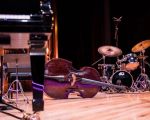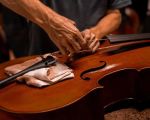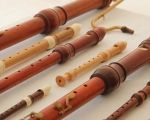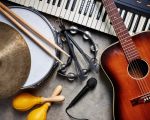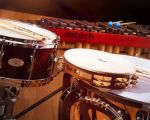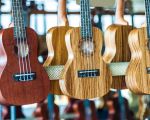- 1-Exploring-Music-Production-Software
- 2-Using-Digital-Audio-Workstations-DAWs
- 3-Beat-Making-and-Loop-Based-Composition
- 4-Vocal-Sampling-and-Music-Mashups
- 5-Leveraging-AI-and-Music-Generation-Tools
- 6-Building-Your-Own-Home-Studio-Setup
- 7-Learning-From-Successful-Artists-Who-Create-Without-Instruments
1. Exploring Music Production Software
One of the most accessible ways to create music without playing an instrument is through music production software. Programs like Ableton Live, FL Studio, and Logic Pro offer intuitive interfaces that allow users to compose, arrange, and produce tracks using virtual instruments, samples, and MIDI controllers. These platforms provide powerful tools to experiment with melodies, rhythms, and effects, making it easier than ever to bring your musical ideas to life without traditional instrumental skills.
2. Using Digital Audio Workstations (DAWs)
Digital Audio Workstations (DAWs) serve as the central hub for modern music creation. DAWs enable users to layer sounds, edit audio, and manipulate tracks with precision. Beginners can take advantage of built-in presets, loops, and sound libraries to build compositions from scratch. Additionally, DAWs support MIDI sequencing, allowing for programming of drum patterns, basslines, and harmonies without touching a physical instrument. Learning basic DAW functions is a crucial step for anyone looking to create music without traditional instrumental skills.
3. Beat Making and Loop-Based Composition
Beat making is an excellent technique for those who want to create music without playing instruments. Many producers start by crafting drum patterns using software drum machines or hardware pads. Loop-based composition uses pre-recorded samples repeated in sequences to build a track. This method fosters creativity by mixing and matching loops from various genres and instruments. Tools like Native Instruments' Maschine and Akai's MPC series are popular for creating beats intuitively and effectively.
4. Vocal Sampling and Music Mashups
Another creative approach involves using vocal samples and mashups. Sampling lets producers take snippets of existing recordings — vocals, instruments, or ambient sounds — and rearrange them into new musical contexts. This method requires minimal instrumental knowledge but can produce unique, compelling tracks. Mashups combine parts of different songs to create fresh sound collages, popularized by artists who innovate within electronic and hip-hop genres.
5. Leveraging AI and Music Generation Tools
Artificial Intelligence is revolutionizing how music can be created without playing instruments. AI-powered platforms analyze music theory and style to generate melodies, chord progressions, and beats automatically. These tools enable creators of all levels to compose music quickly and explore new sonic ideas. Popular AI music generators offer customizable settings to match different moods and genres, democratizing music production for those without formal training.
6. Building Your Own Home Studio Setup
Creating music without instruments is greatly facilitated by a well-equipped home studio. Essential gear includes a computer with capable software, MIDI controllers, audio interfaces, and quality headphones or monitors. Setting up an ergonomic and inspiring workspace enhances productivity and enjoyment in music creation. For beginners, starting with affordable equipment and gradually upgrading can lead to professional-level productions without traditional instrumental play.
7. Learning From Successful Artists Who Create Without Instruments
Many well-known musicians have built their careers creating music without playing traditional instruments. For example, electronic artists like Deadmau5 and Grimes utilize software and programming extensively. Studying their workflows, tutorials, and interviews can provide inspiration and practical tips. These stories highlight that musicality transcends instrument mastery and encourages aspiring creators to explore technology-driven music making.


